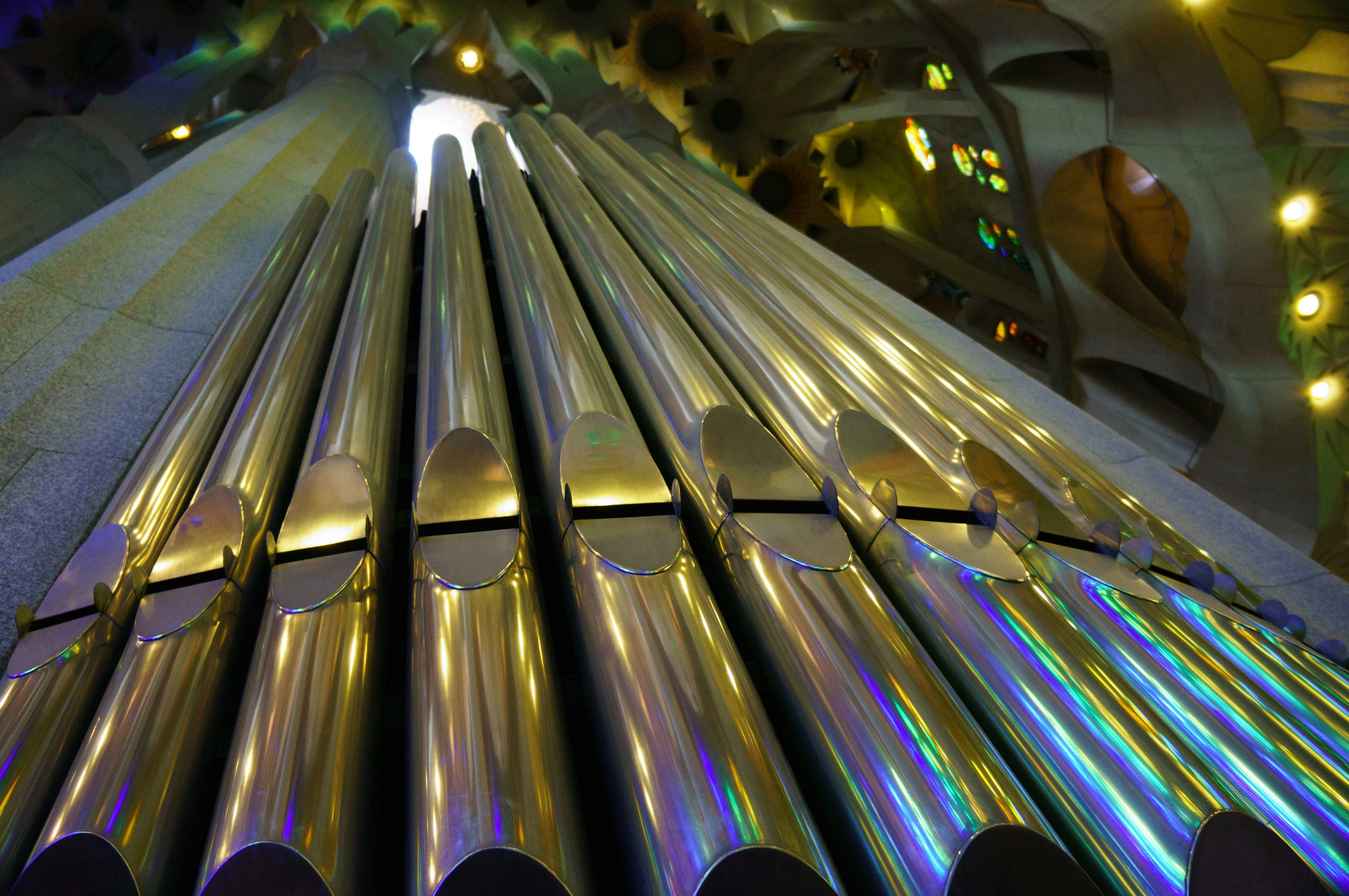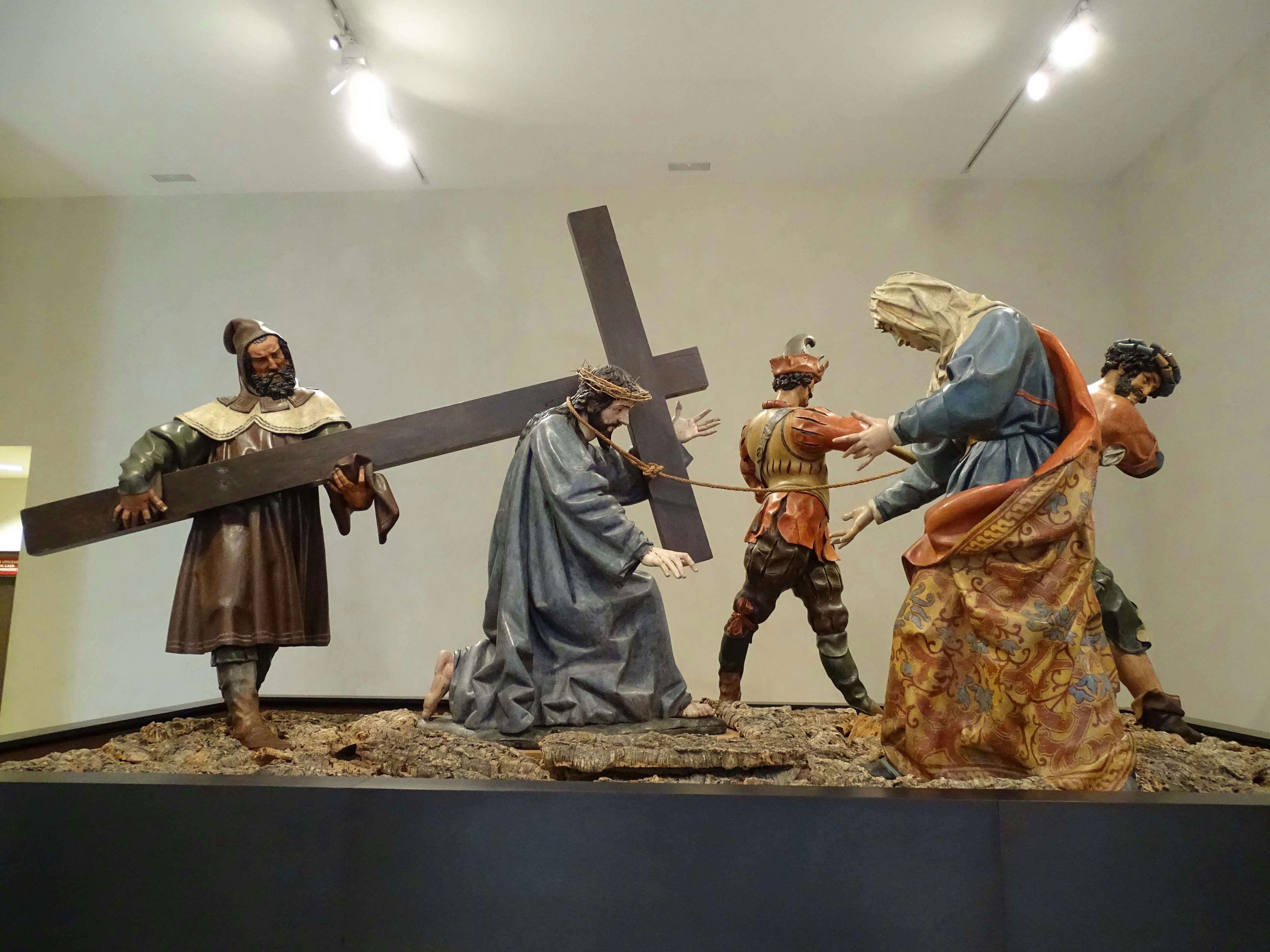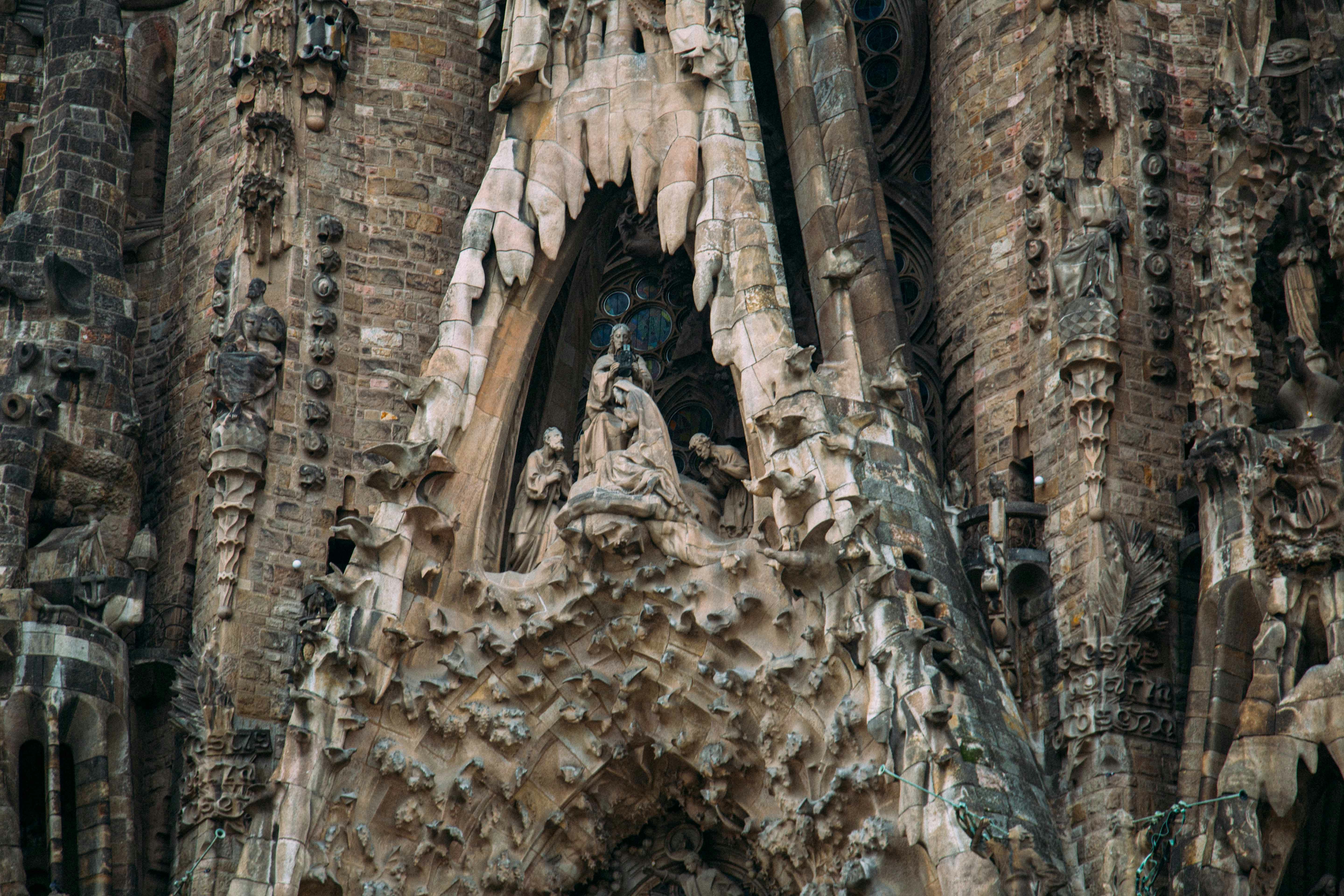- Sagrada Familia
- Sagrada Familia Towers
- Crypt
- Gaudi
- History
- Architecture
- Design
- Inside
- Nativity Facade
- Facades
- Glory Facade
- Mass
- Finish Date
- Dress Code
- Passion Facade
- Christmas
- Park Güell
- Barcelona Flamenco Show Tickets
- Camp Nou Tours
- Casa Batllo
- Casa Mila
- The World of Banksy Barcelona
- Portaventura World
- Casa Vicens
- Hola Barcelona Travel Card
- Wax Museum Barcelona
- Las Golondrinas Barcelona
- Palau De La Musica Catalana
- Erotic Museum of Barcelona
- Montserrat Monastery
- Barcelona Zoo
- KBr Photography Center Mapfre Foundation
- Big Fun Museum
Explore Sagrada Familia’s Interior | Symbolism, Floorplan & Key Elements
What are Sagrada Familia’s interior highlights?

Floor Plan
The floor plan of Sagrada Familia shows the Nativity Facade on the right and the Passion Facade on the left. The Glory facade stands atop the entrance of the basilica.
Sagrada Familia’s interior has 36 “forest-like” columns and 5 naves. The main nave rises above the others connecting it to the transept. The choir is behind the transept, supported by the smallest columns. Right behind the choir is the altar, illuminated by the light from the stained glass windows. The apse, located above the crypt, houses the altar and has seven chapels along with staircases on either side. The rest of the walls in the interiors are decorated with large stained glass windows, the main source of light to the basilica.
The layout of Sagrada Familia’s interior looks like an enormous Latin cross which measures 90 m in length from the entrance to the apse. The naves are limited by the transept that is 60 m long and 45 m wide.

Symbolism
Sagrada Familia’s interiors are brimming with symbols and references from the liturgy.
- The three entrances symbolise the three virtues - Love, Hope and Faith, each of them is a specific portrayal of the life of Christ.
- Columns - Gaudi designed the columns in Sagrada Familia to symbolise the saints rising into heaven and the angels descending to meet them. More specifically, the four columns with symbols in the centre are in honour of Evangelists. The remaining columns are a representation of the twelve apostles, 15 Spanish cities with Archbishops, four Catalan bishoprics and the five continents of the world.
- Stained glass windows - The colours in the stained glass windows set the mood of the church. The yellow, blue and green on the portal of Nativity symbolise the birth of Jesus while the orange and red on the windows of the Passion facade indicate water, light and resurrection. If you also look beyond the canopy, the marvellous golden mosaic dome represents Christianity as a whole.

Geometric details
Gaudi’s lavish use of geometric patterns is recurring in Sagrada Familia’s interiors.
- Hyperboloids are seen in the windows and naves.
- Paraboloids link the surfaces of the columns and vaults with the roof.
- Ellipsoids form the rounded tops of the columns that branch out, making a polygon or a star at the base.
- Helicoids are seen in the spiral staircases where Gaudi wanted to represent the ascending of transcendence as well as in the double-twisted columns highlighting how Gaudi evaded straight lines and angles.
- Doube-twisted columns also provide greater stability to the columns when they branch out in the upper sections.

Inspiration from Nature
The elements of nature in Gaudi’s work can also be called Biomimetic architecture. Gaudi avoided straight lines and angles as a rule in the structure and this was because one barely finds any in nature itself.
- The columns are created in the form of tree trunks to give visitors the feeling of standing deep in a forest. They also branch out creating an illusion of a canopy of palm trees. Two of the pillars are shown to be held by a tortoise and a turtle at the base representing the earth and the sea.
- Other structural elements inspired by the natural world include the spiral stairway, catenary arches, the roofs shaped like conoids and the altar with a canopy decorated with grape vines.
- Ornamental components like the vine-shaped frieze, honeycomb gates, windows shaped like diatom, animals displaced by the church’s construction depicted in the gargoyles and pinnacles that form pyrite crystals and grasses are representations of natural elements.

Lights and Colours
The use of lights and colours to set the mood of Sagrada Familia's interiors is yet another highlight of Gaudi's work that also makes the church so close to looking like paradise.
The large, vibrant stained glass windows of the Sagrada Familia paint the interior of the basilica with beautiful hues of red, green, blue and yellow. In order to achieve this balance between the colours of the glass and natural light, the arrangement has been made such that brightly coloured windows are placed at the bottom and the translucent windows are on top. This lights up the interiors creating the perfect setting for prayer and meditation.
The colours on each of the windows come with sacred representations. The yellow, green and blue on the Nativity portal symbolize poverty, light and the birth of Christ whereas the red, yellow and orange on the Passion portal allude to water, resurrection and light.
Explore the Sagrada Familia's interior











Book Sagrada Familia Tickets and Tours
Frequently asked questions about Sagrada Familia’s interior
Sagrada Familia's interiors are brimming with elements of nature liturgy, symbolism and references from the liturgy. As you walk through the interior, it gives you a feeling of entering a forest as the columns are designed to look like trees and give you an illusion of a palm canopy. You can also find several symbols of nature and Christianity.
Sagrada Familia’s interiors are a combination of curvilinear Art Nouveau forms of architecture along with some Gothic elements. It is also a reflection of nature since Gaudi has steers clear of straight lines and angles, things that one can’t find in nature itself.
The three entrances of Sagrada Familia symbolise the three virtues - Love, Hope and Faith. The columns are constructed to symbolise the saints rising into heaven and the angels descending to meet them. The different colours on the stained glass windows symbolise the birth of Christ, resurrection, water and light.
Sagrada Familia has beautiful stained glass windows. They illuminate the interiors with hues of blue, red, orange, green and yellow and create an illusion of paradise for visitors. It is especially breathtaking during sunset.
The best time to visit Sagrada Familia is between 9:00 am and 11:00 am, just before the crowd peaks. You can also visit between 5:00 pm and 6:00 pm during the sunset hour for breathtaking views that are formed by the light coming through the stained glass windows and illuminating the interiors.
Inside Sagrada Familia, you cannot miss the high columns, the Apse, the Altar, the Crypt, the spiral staircases and the Sagrada Familia Museum in the basement.
Sagrada Familia’s architecture is a mix of curvilinear Art Nouveau forms and Gothic elements along with Catalan Modernism.
It takes roughly 2 hours to explore Sagrada Familia. There is no time limit so make sure to observe all parts of the interiors carefully and not miss a thing.
Yes. You can book your Sagrada Familia Tickets and Tours in advance and have a seamless experience at the basilica.
Yes. Visitors have to cover their shoulders and dress to their knees. The dress code is strictly enforced in Sagrada Familia.
Yes. Cameras are allowed inside Sagrada Familia. Do not forget to capture the beautiful decorations and the mindblowing architecture of the basilica while you are there.
The stained glass windows are vibrantly coloured and illuminate the interiors of Sagrada Familia with hues of blue, red, green, yellow and orange hence giving the columns their beautiful colours.
Sagrada Familia’s interior has elements like the vine-shaped frieze on the Apse, honeycomb gates, windows shaped like diatom, animals displaced by the church’s construction depicted in the gargoyles and pinnacles that form pyrite crystals and grasses which are representations of natural elements.



.jpeg?auto=format&w=468.29999999999995&h=267.59999999999997&q=90&ar=7%3A4&crop=faces)